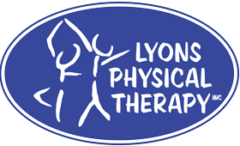90% of Americans suffer headaches as an adult. Most of the time infrequent headaches are caused from stress, dehydration and/or from straining your neck or eyes. If you are one of the thousands of people who suffer from headaches regularly, a physical therapist (PT) can most likely help relieve the frequency and/or intensity of your symptoms.
Headache Types
There are several types of headaches but the 2 main categories are:
Tension: This is the most common kind and can feel like tightness in your head, around your neck and/or a throbbing/aching feeling. The pain can occur on one side or both sides of your head; at the base of your skull; or in your forehead region.
Migraines:These feel like intense tension headaches, but also have symptoms associated with visual disturbances, nausea/vomiting and light sensitivity. It is theorized that migraine headaches are initiated from the central nervous system (brain and spinal cord), which control nerves and blood vessels throughout the body, but specifically to the brain.
What Causes Headaches
There isn’t a known cause for headaches, but many doctors believe headaches are often caused by a combination of factors including, musculoskeletal, psychological, neurovascular, nutritional, and chemical imbalances in the brain. The majority of doctors also agree that stress, regardless of emotional, physical or physiological, can be the main trigger of a headache.
How to Treat a Headache
Treatment for headaches range vastly as there isn’t a single treatment that works for everyone. Most treatments involve a combination of medication and something that addresses the physical aspect of pain. Most people aren’t aware that dysfunctions in the cervical spine (neck) can be the cause of frequent headaches. Healthcare providers that treat headaches, like PT’s, look at the musculoskeletal components to assess whether there is a possible link to the cause of headaches. Even if the musculoskeletal component is secondary and not the main cause of the headache, treating the muscles and joints of the cervical spine and jaw typically helps relieve headache symptoms.
Headaches, regardless of the type, can be devastating to ones day. Thankfully, there are things one can do to lower the risk of getting one.
- Get Up and Move More: Moving increases the circulation throughout your body; breaks up poor posture that arises when maintaining a position too long (sitting); and increases the rate of Serotonin (a brain chemical that makes us feel good) released in your body
- Drink Plenty of Water. Drinks with high amounts of caffeine and/or sugar have been linked to headaches
- Get an Appropriate amount of Sleep: When your body is well rested, it is able to handle mental and physical tension better than when its sleep deprived
- Eat a Well Balanced Diet; Getting the right nutrients daily, keeps the immune system healthy and ensures that our body has the right fuel to run smoothly
- Manage the Stress in your Life: Everyone has stress, but some people handle it better than others. Following the steps outlined above have been proven to reduce stress, decrease headaches and improve ones quality of life.
